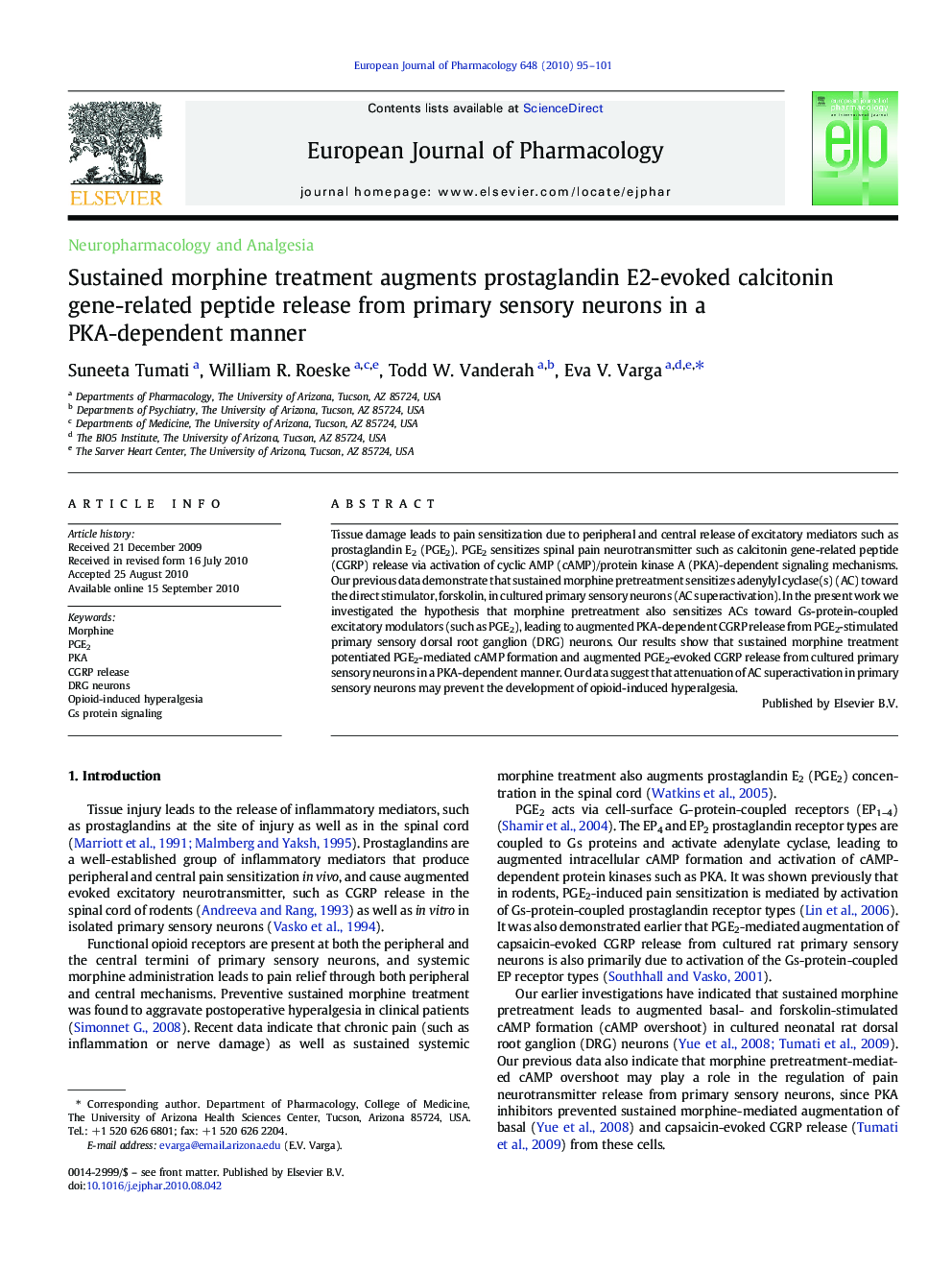| Article ID | Journal | Published Year | Pages | File Type |
|---|---|---|---|---|
| 2533107 | European Journal of Pharmacology | 2010 | 7 Pages |
Tissue damage leads to pain sensitization due to peripheral and central release of excitatory mediators such as prostaglandin E2 (PGE2). PGE2 sensitizes spinal pain neurotransmitter such as calcitonin gene-related peptide (CGRP) release via activation of cyclic AMP (cAMP)/protein kinase A (PKA)-dependent signaling mechanisms. Our previous data demonstrate that sustained morphine pretreatment sensitizes adenylyl cyclase(s) (AC) toward the direct stimulator, forskolin, in cultured primary sensory neurons (AC superactivation). In the present work we investigated the hypothesis that morphine pretreatment also sensitizes ACs toward Gs-protein-coupled excitatory modulators (such as PGE2), leading to augmented PKA-dependent CGRP release from PGE2-stimulated primary sensory dorsal root ganglion (DRG) neurons. Our results show that sustained morphine treatment potentiated PGE2-mediated cAMP formation and augmented PGE2-evoked CGRP release from cultured primary sensory neurons in a PKA-dependent manner. Our data suggest that attenuation of AC superactivation in primary sensory neurons may prevent the development of opioid-induced hyperalgesia.
